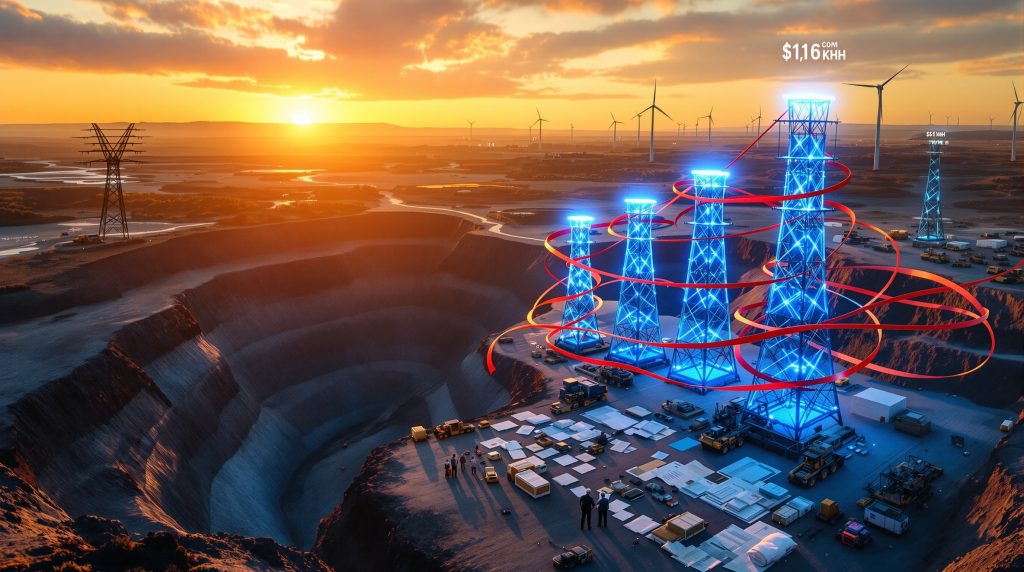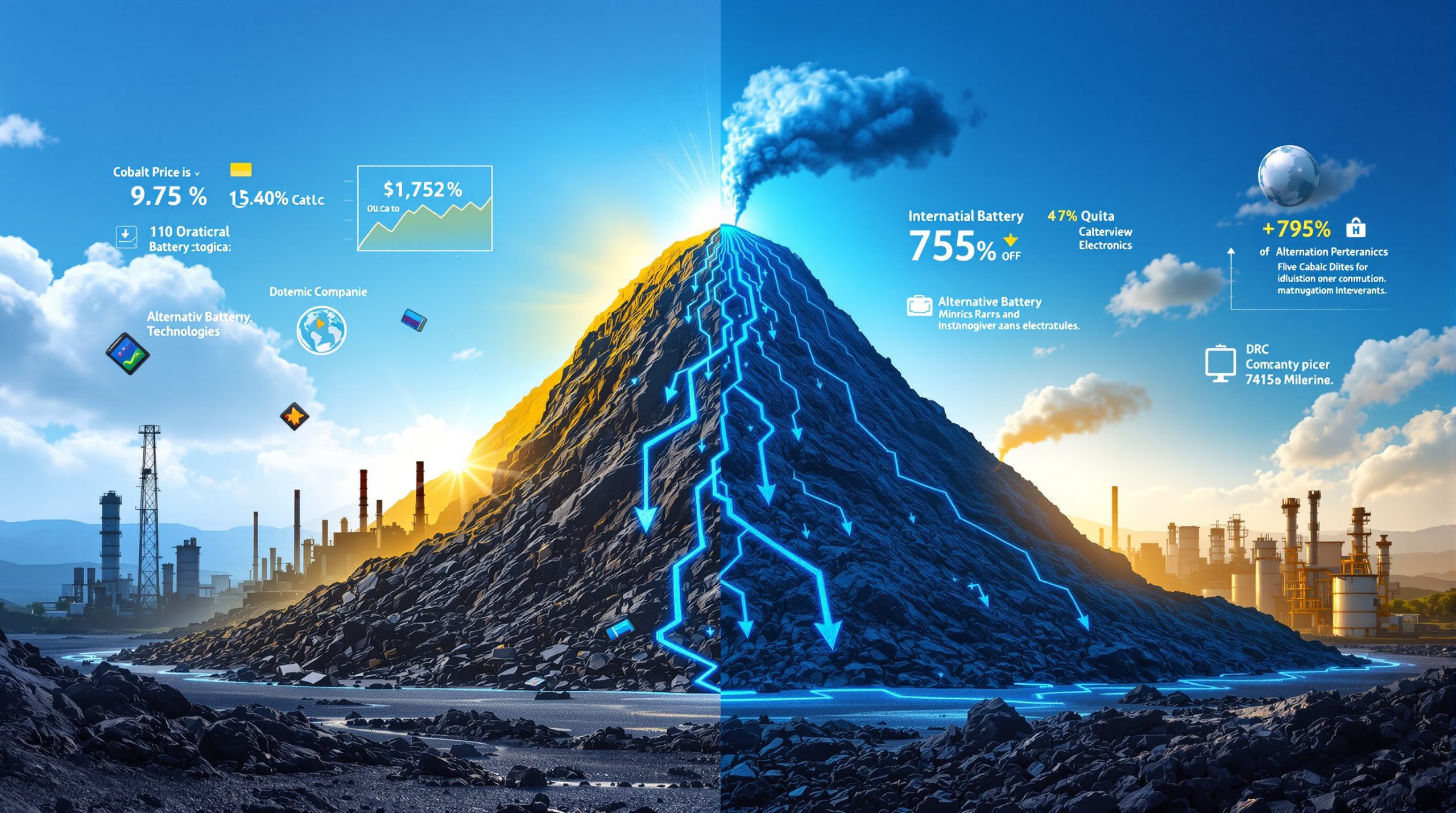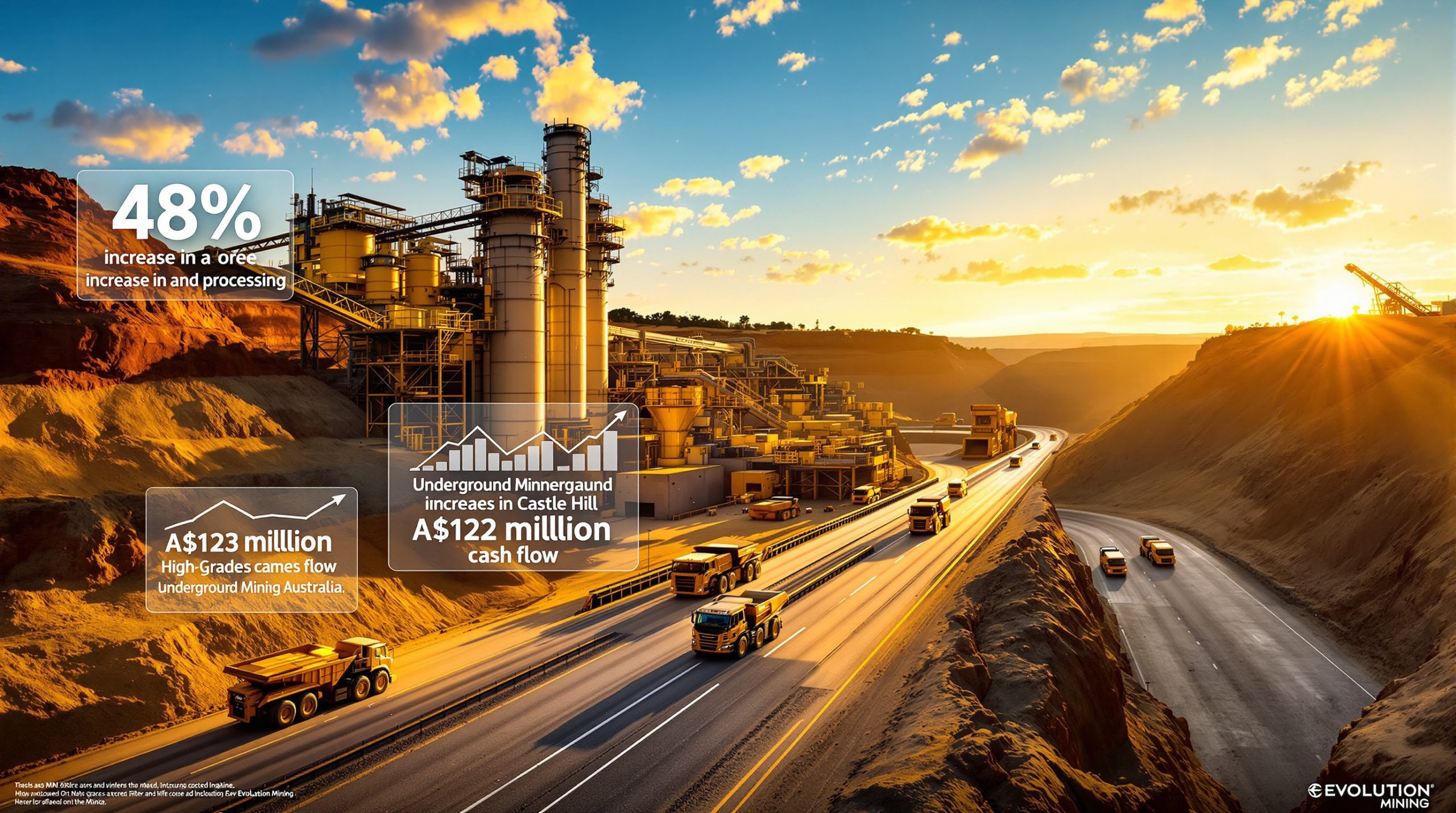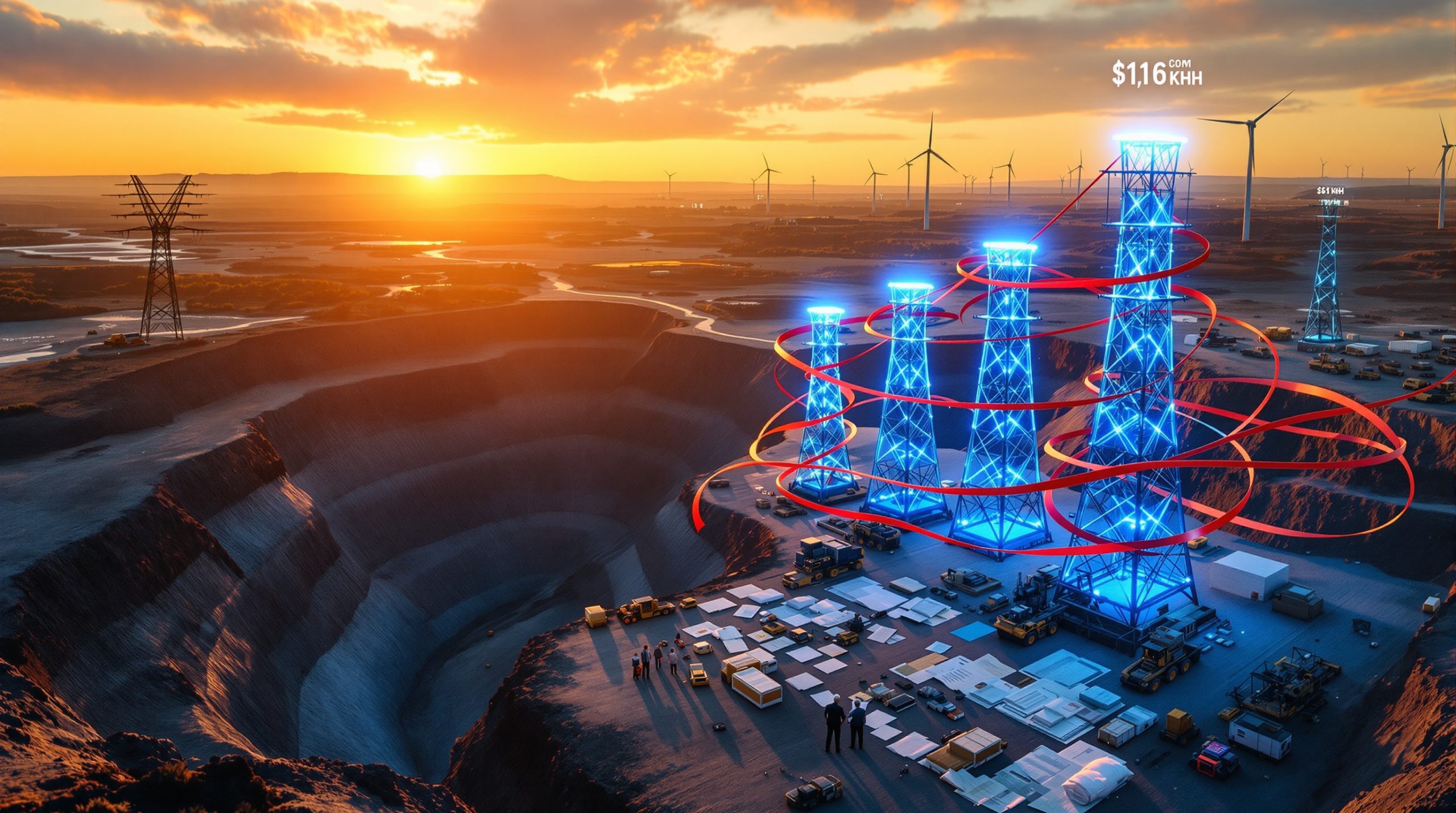Australia's Mining Competitiveness: How Red Tape and Power Costs Impact Investment
Australia's position as a global mining powerhouse faces mounting challenges from increasing regulatory complexity and rising energy costs. These factors are creating significant headwinds for mining companies operating in the country, potentially undermining future investment and economic growth.
Industry leaders have emphasized that addressing these challenges is not merely an economic exercise but essential for maintaining Australia's competitive edge in a rapidly evolving global resources landscape.
How Regulatory Burden Impacts Mining Operations
The Growing Complexity of Environmental Approvals
The environmental approval process in Australia has become increasingly complex and time-consuming for mining companies. The current system involves multiple layers of assessment at both federal and state levels, often with overlapping requirements. This regulatory framework creates significant delays in project timelines, with some approvals taking several years to complete.
Mining projects must navigate through various regulatory bodies, including:
- The Environmental Protection and Biodiversity Conservation Act (EPBC Act) at the federal level
- State-based environmental protection agencies
- Native title and cultural heritage assessments
- Water management authorities
- Local government planning requirements
These overlapping jurisdictions create a complex web of compliance requirements that significantly increases administrative burden and project costs.
According to BHP's head of Australia, Geraldine Slattery, this regulatory complexity represents a "linchpin" issue affecting productivity across not only the resources sector but many other industries as well.
Duplication Between Commonwealth and State Processes
One of the most significant challenges facing mining companies is the duplication of regulatory processes between Commonwealth and state governments. This redundancy forces companies to prepare multiple submissions containing essentially the same information but formatted to meet different requirements.
Key issues include:
- Separate environmental impact assessments for state and federal authorities
- Different timelines and assessment criteria
- Inconsistent interpretation of similar regulations
- Multiple reporting requirements for the same environmental factors
- Lack of coordination between different regulatory bodies
This duplication not only increases costs but also extends project timelines, creating uncertainty for investors and potentially jeopardizing project viability.
Industry experts note that while robust environmental standards are necessary, the current approach focuses more on process complexity than environmental outcomes, resulting in delays without necessarily improving protection. For companies seeking mining permitting insights, navigating these complexities has become increasingly challenging.
How Rising Power Costs Affect Mining Economics
Australia's Changing Energy Landscape
Energy costs represent a significant portion of operational expenses for mining companies in Australia. Over recent years, these costs have risen substantially, putting pressure on profit margins and competitiveness.
The mining sector consumes approximately 10% of Australia's total energy, with electricity being a critical input for various mining processes, including:
- Mineral processing and refining
- Water pumping and management
- Ventilation systems in underground mines
- Material handling and transport systems
- Site infrastructure and accommodation
Rising electricity prices directly impact the cost structure of mining operations, affecting their global competitiveness.
Some mining operations have begun implementing energy transition strategies to mitigate these rising costs, but the transition requires significant capital investment and doesn't address immediate cost pressures.
Comparative Disadvantage in Global Markets
When compared to other mining jurisdictions, Australia's power costs create a competitive disadvantage. Countries with lower energy costs can produce minerals at lower operational expenses, allowing them to offer more competitive pricing in global markets.
A comparison of industrial electricity prices shows:
| Country | Average Industrial Electricity Price (USD/kWh) |
|---|---|
| Australia | $0.14-0.18 |
| Canada | $0.06-0.10 |
| United States | $0.07-0.12 |
| Chile | $0.10-0.14 |
This price differential creates a significant cost disadvantage for Australian mining operations, particularly for energy-intensive processes like aluminum smelting and copper refining.
For a typical large-scale copper operation, the power cost difference between Australia and Canada could represent tens of millions of dollars annually in additional operational expenses.
BHP's Perspective on Australia's Competitiveness
Geraldine Slattery's Call for Reform
BHP's head of Australia, Geraldine Slattery, has been vocal about the need for regulatory and energy reforms to maintain Australia's competitive edge in the global mining sector. In her recent comments at a Western Australia conference, Slattery emphasized that these issues are not minor concerns but fundamental to the sector's productivity and future investment prospects.
Slattery highlighted that Australia must "speed up environmental approvals and boost access to cheap power" to remain competitive in attracting mining investment capital. Her comments reflect growing concern within the industry about Australia's ability to compete with other nations that are implementing mining-friendly policies.
With three decades of experience at BHP and previously leading the company's petroleum business, Slattery's perspectives carry significant weight in the industry, particularly as she has been identified as a potential successor to current CEO Mike Henry.
Key Areas Identified for Improvement
According to Slattery, Australia needs to address several key areas to enhance its competitiveness:
- Streamlining permitting timeframes: Reducing the time required for environmental approvals and other regulatory processes
- Improving labor productivity: Addressing Australia's labor productivity growth, which is currently at a sixty-year low
- Reducing tax burden: Making Australia's tax system more competitive with other developed nations
- Enhancing workforce training: Improving skills development to meet the needs of modern mining operations
- Embracing automation and AI: Leveraging technology to address productivity challenges
These recommendations highlight the multifaceted approach needed to address Australia's competitiveness challenges in the mining sector.
Slattery's emphasis on automation & AI solutions as "core" to addressing productivity challenges indicates that technological adoption is viewed as essential rather than optional for maintaining competitiveness in the global mining industry.
Global Competition for Mining Investment
The United States' Strategic Shift
The United States has recently implemented policies aimed at building up its domestic mining industry, particularly for critical minerals. This shift represents a strategic move to reduce dependence on China and secure supply chains for materials essential to the energy transition and defense industries.
BHP CEO Mike Henry has described this policy shift as "breathtaking," noting that it has prompted the company to consider reopening old mines in Arizona. This example illustrates how policy environments can significantly influence investment decisions in the mining sector.
The US approach includes:
- Tax incentives for domestic mineral production
- Streamlined permitting processes for critical mineral projects
- Financial support for processing and refining facilities
- Research and development funding for mining technologies
These initiatives create a more attractive investment environment for mining companies, potentially drawing capital away from traditionally dominant mining jurisdictions like Australia.
The strategic shift in US policy demonstrates how quickly the global competitive landscape can change, with companies like BHP reevaluating their global investment priorities in response.
Other Competing Nations
Beyond the United States, several other countries are actively working to attract mining investment:
- Canada has implemented tax incentives and streamlined regulatory processes for critical minerals projects
- Chile continues to develop its mining sector with competitive power costs and established infrastructure
- Indonesia has implemented policies to encourage domestic processing of minerals
- Various African nations are revising mining codes to attract foreign investment
This global competition for mining capital underscores the importance of Australia maintaining a competitive regulatory and cost environment.
For mining companies with global portfolios, investment capital naturally flows toward jurisdictions offering the most favorable combination of geological potential, regulatory efficiency, and operational costs.
The Economic Impact of Mining Competitiveness
Productivity and Living Standards
Slattery emphasized that Australia's declining productivity growth is not merely an economic statistic but a trend that poses real challenges for attracting future investment and sustaining higher living standards. Mining has historically been a significant contributor to Australia's productivity growth and economic prosperity.
The mining sector's contribution to the Australian economy includes:
- Approximately 10% of GDP
- Over 50% of export earnings
- Employment for more than 250,000 people directly
- Support for numerous regional communities
- Significant tax and royalty payments to government
Any decline in mining investment or activity would have substantial ripple effects throughout the economy.
The productivity challenge extends beyond the mining sector itself, affecting the broader economy through supply chains, service providers, and tax revenue that supports public services and infrastructure.
Investment Decisions and Future Projects
Despite the challenges, BHP recently earmarked more than A$840 million for its Olympic Dam copper operations in South Australia, with plans to potentially double output from the state. This investment demonstrates that Australia remains an attractive destination for mining investment, but maintaining this position requires addressing the regulatory and cost challenges identified by industry leaders.
Factors influencing future investment decisions include:
- Regulatory certainty and efficiency
- Energy costs and reliability
- Labor costs and productivity
- Tax and royalty regimes
- Infrastructure quality and access
- Political stability and sovereign risk
Addressing these factors in a coordinated and strategic manner is essential for securing future mining investment in Australia.
The BHP investment in Olympic Dam represents a significant vote of confidence in Australia's mining future, with a final investment decision expected by mid-2027 regarding plans to potentially double copper output from South Australia.
Potential Solutions and Reform Pathways
Environmental Law Reform Progress
Australia is currently in the final stages of negotiating reforms to its environmental laws, with new legislation expected to be introduced to parliament in its final sitting fortnight of 2025. These reforms aim to streamline the approval process while maintaining strong environmental protections.
Key elements of the proposed reforms include:
- Creating a single digital environmental assessment platform
- Establishing clear national environmental standards
- Reducing duplication between federal and state processes
- Improving transparency and accountability in decision-making
- Enhancing compliance monitoring and enforcement
These reforms represent a significant opportunity to address one of the major challenges identified by mining companies operating in Australia.
Industry stakeholders view these reforms as an important step toward addressing regulatory inefficiency without compromising environmental outcomes, potentially establishing a model for how strong oversight can coexist with efficient processes.
Energy Transition and Cost Reduction Strategies
Addressing high energy costs requires a multifaceted approach that balances the need for affordable power with Australia's climate commitments. Potential strategies include:
- Increasing renewable energy generation to reduce electricity costs over time
- Improving grid reliability and transmission infrastructure
- Developing energy storage solutions to manage intermittency
- Implementing energy efficiency measures in mining operations
- Exploring opportunities for self-generation at mine sites
Many mining companies are already investing in renewable energy projects to reduce their exposure to high grid electricity prices and meet sustainability goals.
The challenge lies in managing the transition period, where renewable infrastructure requires significant upfront capital while still delivering competitive energy costs for energy-intensive mining operations.
What Does This Mean for Australia's Mining Future?
Balancing Regulation and Competitiveness
The challenge for Australia is to maintain strong environmental and social standards while creating a competitive environment for mining investment. This balance is essential for ensuring that mining continues to contribute to Australia's economic prosperity while meeting community expectations regarding environmental protection and social responsibility.
Achieving this balance requires:
- Evidence-based regulatory approaches that focus on outcomes rather than processes
- Coordination between different levels of government
- Regular review and refinement of regulatory frameworks
- Engagement with industry, communities, and other stakeholders
- Benchmarking against international best practices
The goal is not deregulation but smarter regulation that achieves environmental protection while enabling efficient project development.
Embracing Innovation and Technology
Automation, artificial intelligence, and other technological innovations offer significant opportunities to address productivity challenges in the mining sector. These technologies can improve efficiency, reduce costs, enhance safety, and minimize environmental impacts.
Examples of technological innovation in mining include:
- Autonomous haulage systems
- Remote operations centers
- Predictive maintenance using AI
- Digital twins of mining operations
- Advanced ore sorting and processing technologies
Embracing these innovations will be crucial for maintaining Australia's competitive position in the global mining industry.
As BHP's Slattery noted, automation and artificial intelligence are "core to addressing Australia's productivity challenges," indicating the industry views technological adoption not as optional but as fundamental to future competitiveness.
The Path Forward for Australian Mining
The challenges highlighted by BHP's Geraldine Slattery—regulatory complexity and high power costs—represent significant hurdles for Australia's mining sector. However, they also present opportunities for reform and improvement that could strengthen the industry's long-term competitiveness.
By addressing these challenges through targeted reforms, Australia can maintain its position as a leading mining nation while adapting to changing global conditions. The ongoing environmental law reforms and increasing adoption of renewable energy represent positive steps in this direction.
For mining companies, investors, and policymakers, the key will be finding the right balance between regulatory oversight, environmental protection, and economic competitiveness. This balance is essential for ensuring that Australia's mining sector continues to thrive and contribute to the nation's prosperity in the decades to come.
Understanding industry evolution insights and implementing decarbonisation benefits will be crucial for companies navigating these challenges while positioning themselves for future success.
Disclaimer: This article contains analysis and forecasts about the mining industry's future. These projections are based on current information and trends, but actual outcomes may differ due to changing market conditions, policy developments, and other unforeseen factors. Investment decisions should be made based on comprehensive research and professional advice.
Want to Stay Ahead of Major ASX Mineral Discoveries?
Discovery Alert's proprietary Discovery IQ model delivers instant notifications when significant mineral discoveries are announced on the ASX, giving investors a crucial edge in the market. Explore how historic discoveries have generated substantial returns by visiting the dedicated discoveries page and begin your 30-day free trial today.




